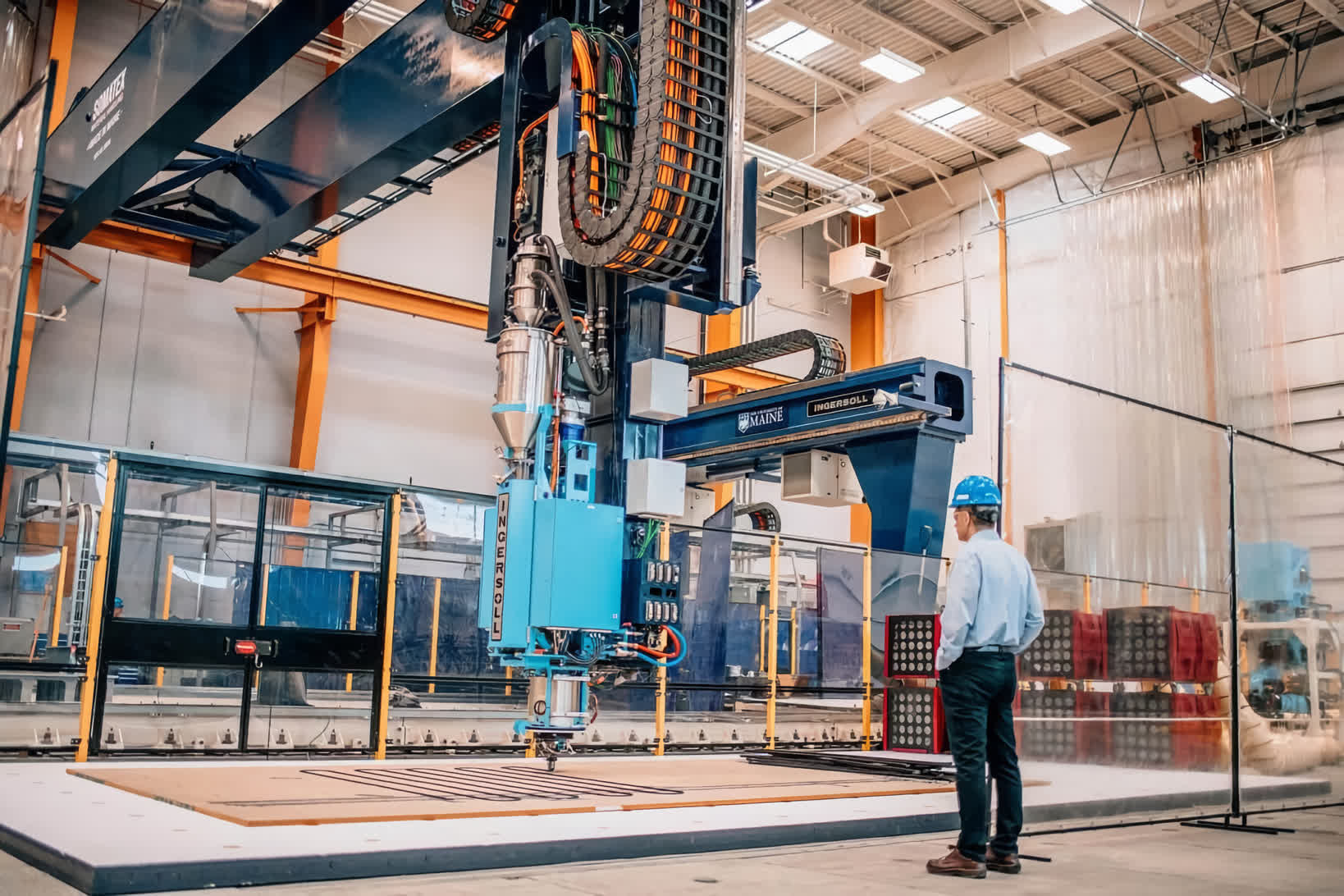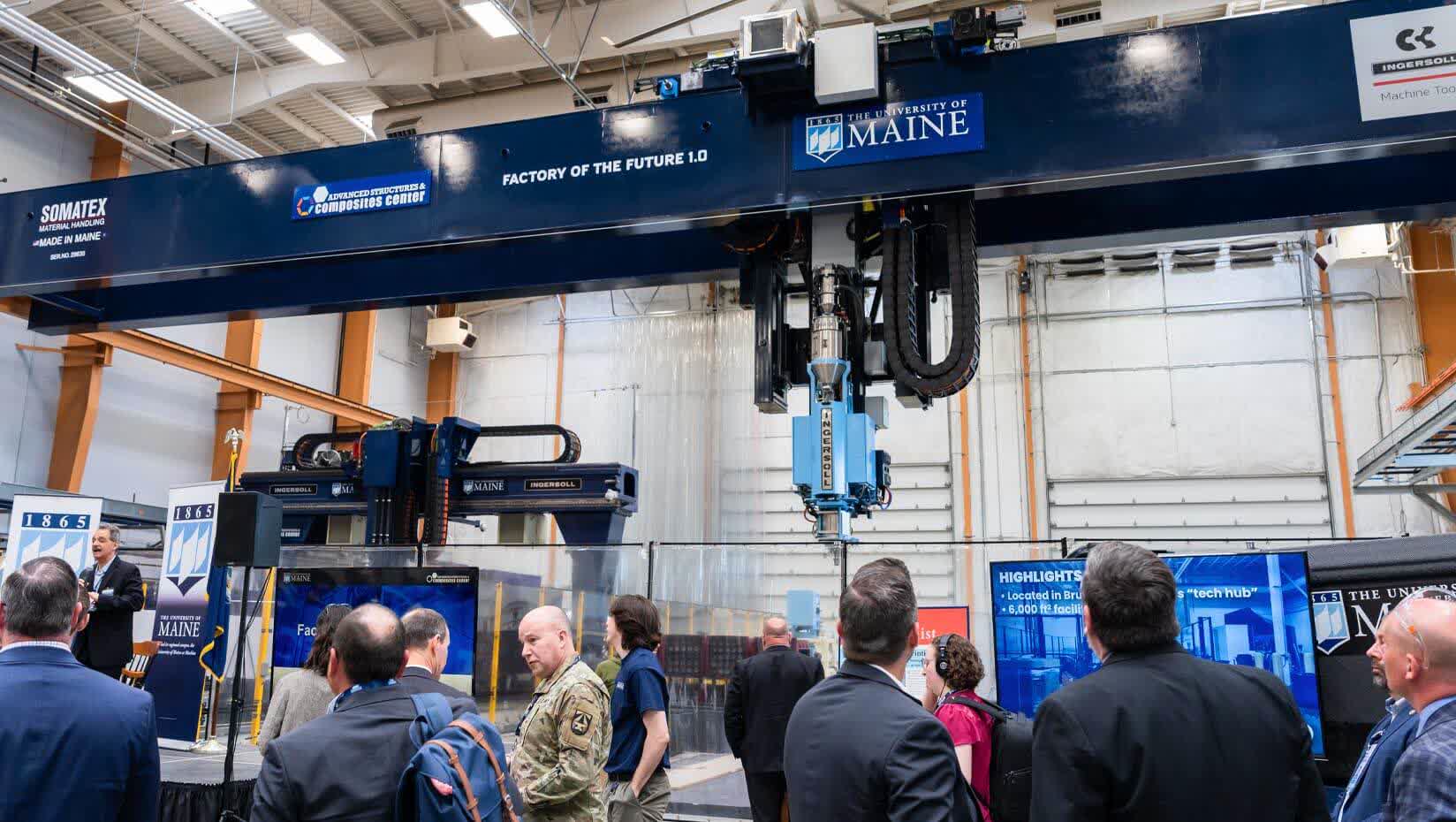Forward-looking: The University of Maine has broken its own 2019 Guinness World Record with a next-gen polymer 3D printer that is four times the size of its predecessor. Dubbed "Factory of the Future 1.0," or FoF 1.0 for short, the new thermoplastic printer is poised to advance sustainable manufacturing across a range of sectors.
FoF 1.0 can print objects as large as 96 feet long by 32 feet wide by 18 feet high at a rate of up to 500 pounds per hour, and can switch between multiple processes including large scale additive manufacturing, subtractive manufacturing, robotic arm operations, and continuous tape layup.
The printer is housed within the Advanced Structures and Composites Center (ASCC) at the University of Maine. It can work on projects solo or team up with MasterPrint (the aforementioned record breaking 3D printer) to tackle a as a team. The two can even work on the same part simultaneously if need be.
The printer unveiling ceremony was attended by representatives from the Department of Energy, the Department of Defense, the Main State Housing Authority, and other partners that aim to utilize the tech. It could enable eco-friendly and cost-effective manufacturing with applications in national security, maritime vessel fabrication, bridge construction, wind and ocean energy tech, and affordable housing.
Mark Wiesendanger, director of development at MaineHousing, said the state needs an estimated 80,000 additional homes by 2030, and many of those are specifically for folks with incomes at or below the area median.

"This effort creates another means of producing quality affordable housing, while further driving costs down, and using abundant wood residuals from Maine's sawmills," Wiesendanger said.
It is worth noting that Maine is the most forested state in the country, producing over a million tons of wood residuals annually that can be used as 3D printer feedstock.
The idea of using large 3D printers to construct affordable housing at scale has been around for years, but the rollout has been somewhat slow. Still, that has not stopped multiple industries from expressing interest. NASA, for example, is aiming to build 3D-printed houses for use on the Moon by 2040.
